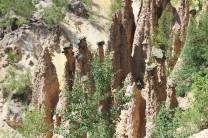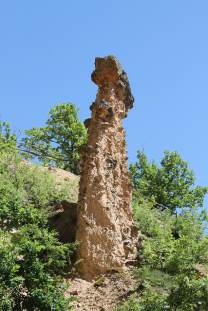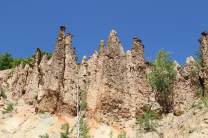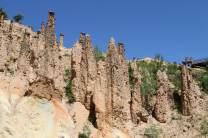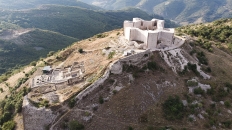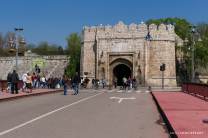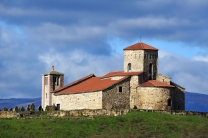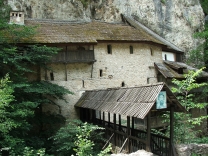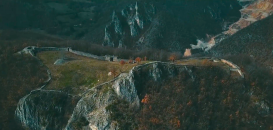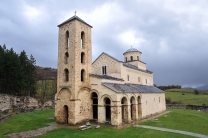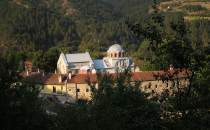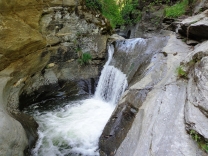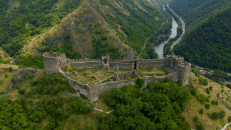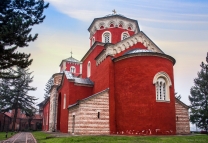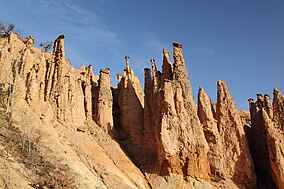
Đavolja Varoš
Đavolja varoš (Serbian Cyrillic: Ђавоља варош, meaning "Devil's Town") is a peculiar rock formation, located in south Serbia on the Radan Mountain on the territory of the village of Đake in the municipality Kuršumlija.
Geology
Đavolja Varoš features 202 exotic formations described as earth pyramids or "towers", as the locals refer to them. They are 2 to 15 m (6 ft 7 in to 49 ft 3 in) tall and 4 to 6 m (13 to 20 ft) wide at the base. These formations were created by strong erosion of the soil that was scene of intense volcanic activity millions of years ago. Most of the towers have "caps" or "heads" of andesite, which protect them from further erosion. Volatile volcanic history left marks in the multicolored rocks in the towers hinterlands. However, Đavolja Varoš in its modern form is a relatively new feature. As the inhabitants of the surrounding region were cutting down the forests, they enabled for the precipitation to erode the rocks. The area beneath the towers is called The Hell gully (Paklena jaruga) and the surrounding terrain is a location of the mine shafts from the medieval Nemanjić Serbia.
A natural spring is located beneath the formations and has a high mineral concentration. There are two springs: Đavolja voda (Devil's Water), with extremely acidic water (pH 1.5) and high mineral concentration (15 g/l of water), and Crveno vrelo (Red Well). The unusually pungent spring waters were examined for the first time in 1905 by Aleksandar Zega, founder of the Serbian Chemical Society.
Protection
The formations were scientifically examined and described in 1955 by Tomislav Rakićević. Since 1959, Đavolja Varoš has been protected by the state and a 1995 decision of the Serbian Government declared it a major natural monument subject to category one protection. It is visited by 50,000 tourists yearly.
Đavolja Varoš was a nominee in the New Seven Wonders of Nature campaign.


